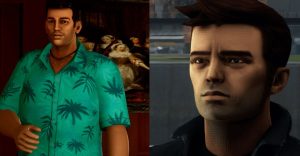Hulk: 10 Best Comic Issues Of The 1990s

Hulk comics of the 1990s were dominated by the prolific tenure of writer Peter David, who, after taking the reigns in May 1987, would continue his run for the majority of the following decade in an unprecedented 11-year stint on the title that lasted until June of 1998.
David’s offbeat stories revitalized the Hulk’s adventures, introducing further alternate versions of the hero, including The Maestro, a Hulk from a dystopian future ravaged by nuclear war, and the “Professor Hulk” incarnation who would later feature prominently in the MCU film Avengers: Endgame. Although the 90s are a heavily criticized decade in comics for the “style over substance” approach taken by most books of the era, The Incredible Hulk stands in contrast, featuring some of the most iconic stories in the history of the character.
“Brakoow” Incredible Hulk #449, 1997

Hulk, once again on the run and separated from Banner following the events of Marvel’s Onslaught crossover, encounters the Thunderbolts, a new team of superheroes attempting to take him into custody. Unbeknownst to both the Hulk and readers at the time, they would later be revealed as a consortium of villains in disguise, masquerading as heroes in an attempt to capitalize upon the recent vacuum created by the apparent deaths of the Fantastic Four and Avengers.
Essentially an answer to DC’s Suicide Squad, the Thunderbolts have gone on to become a celebrated franchise in their own right, with multiple incarnations occasionally redeeming some of Marvel’s most underutilized former villains.
“The Closing Circle” Incredible Hulk #393, 1992

A 30th-anniversary issue spotlighting some of the greatest moments of Hulk comics to date, Incredible Hulk #393 featured a rundown of flashbacks of his most classic battles, drawn by some of the greatest artists of the era.
The giant-sized issue is grounded by a quiet story featuring superhero psychotherapist Doc Samson, as he analyzes Bruce Banner’s history of abuse and neglect, building to the multiple mental illness diagnoses that would become cannon to the character in following years.
“He’s Back!” Incredible Hulk #372, 1990

After a few years establishing a separate personality for the gray Hulk as the cunning “Mr. Fixit”, Peter David reintroduced the classic green version of the character a few years into his run. Simultaneously introducing the concept of Banner’s dissociative identity disorder, the green Hulk was treated like even more of a distinct character than before, with the metaphor of this suppressed identity trapped behind a psychologically constructed iron door within the doctor’s subconscious mind.
His release in the story would lead to a triumvirate of identities vying for control of the singular body of Banner, with each making their case for control as necessary during the following stories as David built towards a completely unexpected crescendo.
“Honey, I Shrunk The Hulk” Incredible Hulk #377, 1991

One of the most defining moments of Peter David’s run on The Incredible Hulk comics, issue #377 features a therapy session with the patient, Bruce Banner, and therapist, Doctor Leonard Samson. On the back of the return of the more savage green Hulk, Banner, who had spent the past few years sharing his existence with the more conniving gray Hulk, mentally and emotionally faced down his internal demons.
The result was a new, composite being, merged from all present personalities, later dubbed by fans as “Professor Hulk”. While technically a distinct personality, this new Hulk possessed Banner’s intelligence combined with the Hulk’s strength and served as the template for the character’s depiction during 2019’s Avengers: Endgame film.
“Error” Incredible Hulk #425, 1996

In a creative twist on the status quo, Incredible Hulk #425 reveals that the new composite Hulk does indeed possess a weakness when he loses his temper and reverts into a mindless, savage version of the mortal Bruce Banner. Completely flipping the norm, the Hulk now contends with the same struggle as his former form, but with a twist: the new Hulk must learn to control his temper, lest he becomes a mindlessly rampaging yet highly vulnerable human Bruce.
The results are exactly as expected, but added a new layer of nuance to Peter David’s ongoing epic, proving there were still new stones to turn even almost a decade into his tenure.
“Party Animals” Incredible Hulk #417, 1994

Though Peter David’s Hulk run is marked by iconic moments of turmoil and upheaval, the author still found new ways to touch on the emotional core of the character. One of these standouts occurs in Incredible Hulk #417, which depicts the bachelor party of Rick Jones before his marriage to Marlo Chandler. As Marvel’s original sidekick, Jones had a storied history amongst the superhero community, not just with the Hulk, but also with Captains America and Marvel, as well as the Avengers.
The ever-chivalrous Captain America attempts to hire a magician to entertain Rick’s bachelor party, only to discover to his horror and the delight of all other attendees that she is an adult performer. Meanwhile, Marlo’s bachelorette party is crashed by a handful of villains, leading to an especially poignant battle between Marvel’s greatest female champions against a social stand-in for the male fans who remained on the fence regarding their validity as legitimate heroes, and proving that girls can hit just as hard as boys when necessary.
“It’s All True!” Incredible Hulk #474, 1999

The final issue after 35+ years of Incredible Hulk comics, issue #474 is a fitting end to the era, with extra emphasis on Banner the man and the self-control it takes for him to keep his various Hulks in check. Reflecting upon the years of story building up to it, the issue culminates in the reveal that longtime Hulk foe Emil Blonsky, The Abomination, was responsible for the recent death of Betty Ross-Banner, Bruce’s wife and traditionally one of the only anchoring aspects of his tumultuous life.
Rather than rage as expected, Bruce chooses to forgive the villain; dealing Blonsky with a crushing personal defeat after so much effort. As the main story sets both hero and villain free to pursue their next chapters, the rest of the issue plays as a tribute to what came before, paying homage to the history of the character while also carefully reestablishing a more comfortable status quo as the series prepared for its first relaunch in decades.
“The Gathering Storm” Hulk #1, 1999

Peter David’s Incredible Hulk run upended the character, creating new wrinkles and nuance while completely challenging the former status quo. Although new writers were brought in following his departure, it wasn’t until a year after that Marvel completely relaunched the book and returned the character to his roots as a rampaging force to be reckoned with. While David had penned the most definitive stories of the past decade, upcoming film prospects led to an editorial suggestion to revert the character to his classic status quo.
Although maligned by many fans due to David’s sudden departure and Marvel’s efforts to quickly erase his contributions, the relaunched Hulk series nevertheless started strong with its back-to-basics approach as Marvel began considering potential adaptations of the character that would eventually birth the highly successful MCU film franchise.
Hulk: Future Imperfect #1 1992

One of the definitive dystopian futures of the Marvel Universe, Future Imperfect introduced a world devastated by nuclear war and ruled by a future version of the Hulk, who, due to his irradiated form, not only survived the fallout but thrived amongst the suffering masses.
Future revisits and time travel shenanigans have since repeatedly brought the Maestro into conflict with the mainstream heroes of the Marvel Universe, which only further cements his status as one of the greatest variants in the multiversal pantheon. As David’s tenure continued to unleash new versions of the Hulk, Maestro was unlike any seen before; a cunning, calculating, and morally corrupt sadist, the worst version of the combined Hulk personalities.
“The Lone And Level Sands” Incredible Hulk #467, 1998

One issue removed from the death of Betty Ross-Banner, Peter David’s final Incredible Hulk issue takes fans 10 years into the future and closes his tenure on the book with some not-so-subtle messages about life, love, stress, and setbacks. With most of his Hulk drama put behind him, Rick Jones reflects upon his history with the green goliath in an interview with an aged Peter Parker, revealing the monster’s exile following his greatest loss.
Although the story technically exists as one of Marvel’s many alternate futures, Rick’s tale is full of heartbreak, heroism, and humility, and serves as a gutwrenching finale to David’s run on the book. Peter David himself has gone on record citing his ongoing divorce proceedings as an influence while penning his final Hulk issues, and his swan song can be easily read with that in mind; a bittersweet farewell after years of dedication, and a clean slate for the next worthy contender.
About The Author


















